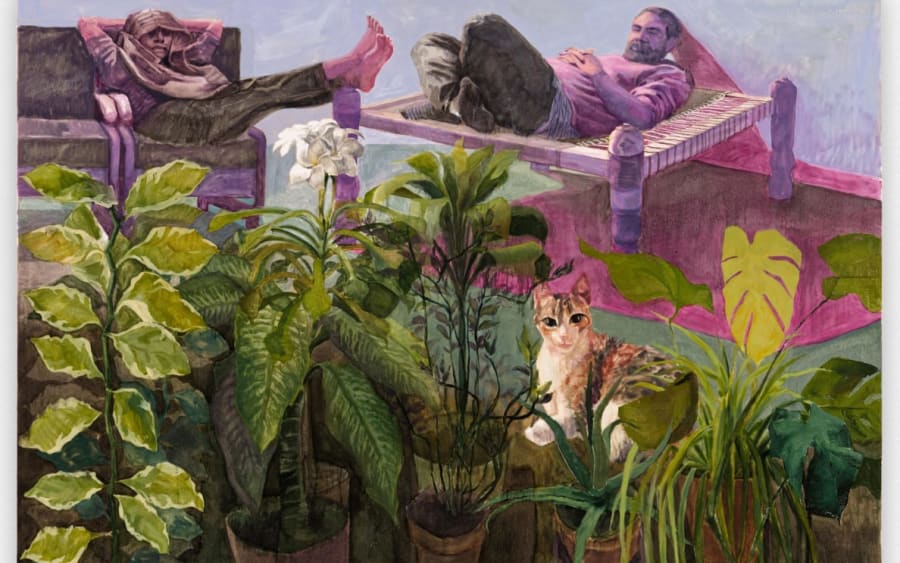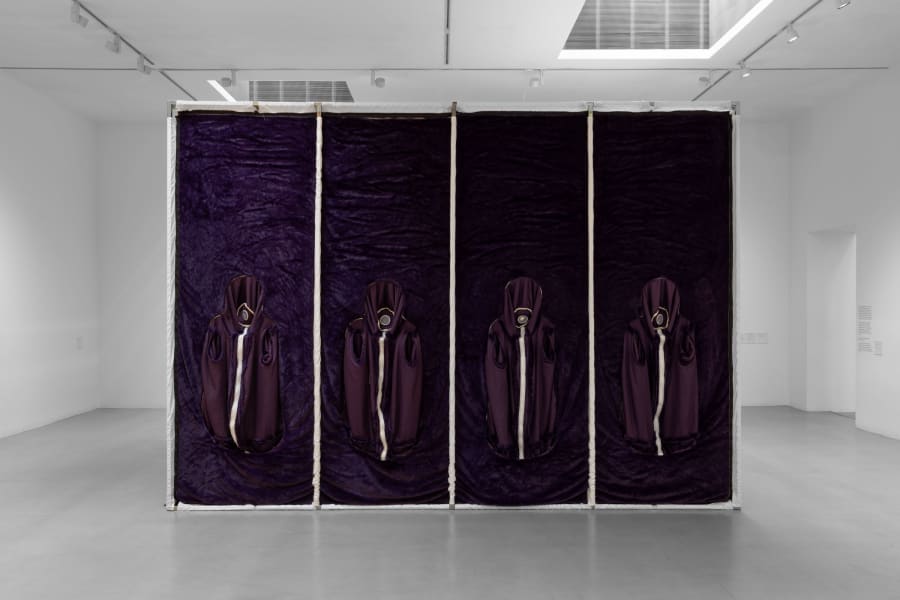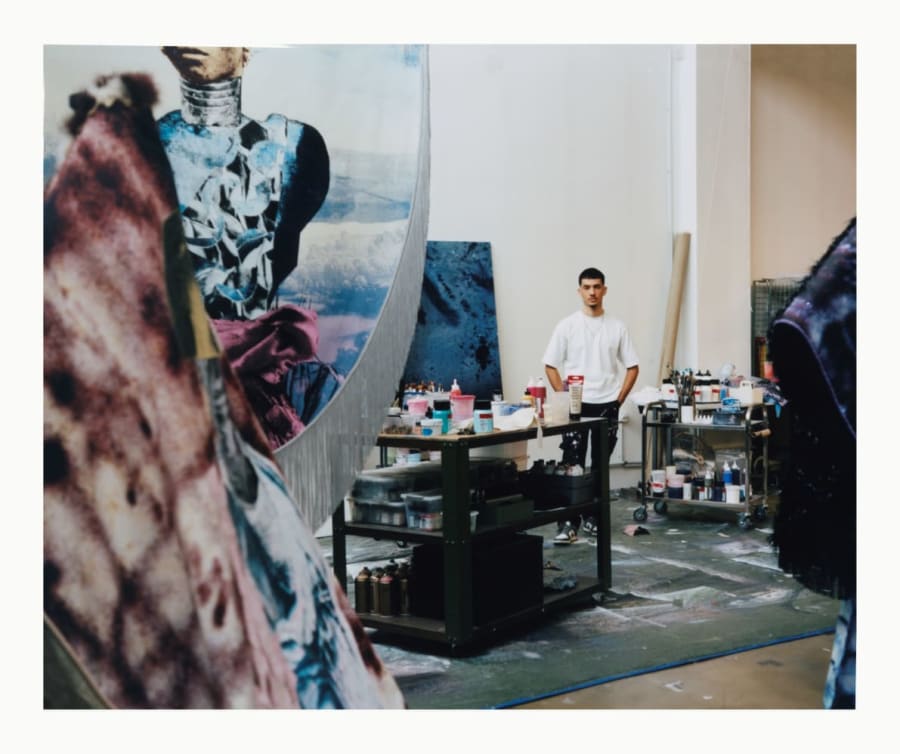Ten years ago in Paris, a troupe of dancers burst onto the scene and caused quite a stir. Their skin was candy-pink or moss-green, lustrous or scaly. Inside the exhibition space, they engaged in wild routines: pole dancing. The discipline, at once acrobatic and raunchy, distorted their bodies to the brink of becoming grotesque. Unrecognizable, they seemed to be nothing but legs and breasts – multiplying mounds of flesh. We are talking about Elsa Sahal’s ‘Pole Dance’ exhibition at Galerie Papillon in 2015, in which the artist presented one of her iconic series for the first time.
Sahal continued her parallel exploration of ceramics and the contemporary body, determined to renew the legacies that weighed on both. The aerial compositions, crafted in enameled stoneware, seemed to defy gravity, reaching dizzying heights as they coiled around metal poles, thereby freeing themselves from the traditional pedestal. Technical expertise, however, is of little interest to the artist. To challenge the canon and break free of its shackles, the Beaux-Arts de Paris graduate prefers to arm herself instead with erudition and humor. Clay, the body, and a thirst for freedom have been at the heart of her practice since her career began back in 2000.
In 2012, Sahal pulled off a major coup. She installed a more than three-meter-tall pink sculpture in the pools of the Jardins des Tuileries in Paris: a fragile pair of legs sitting atop robust stoneware pillars, studded with shells. From the exposed female genitalia water proudly gushed forth. The work, modestly titled Fontaine (Fountain, 2012), makes a clear nod to Marcel Duchamp’s urinal of the same name. It also contains an implicit manifesto: public space belongs to us all. Seven years later, the artist presented another eccentric organic pink fountain, the Vénus polymathe jouissante [Climaxing polymath Venus, 2019], on the shaded patio of MO.CO Panacée in Montpellier.
For a long time, Sahal spearheaded the ceramic revival more or less on her own. When two major exhibitions in France consolidated the renewed appeal of the medium, she took part in both. In 2015–16, ‘Ceramix: From Rodin to Schütte’ brought together works by more than 100 artists from the 20th and 21st centuries at the Bonnefanten Museum in Maastricht, La maison rouge in Paris, and La cité de la céramique, Sèvres, France. The exhibition dedicated monographic rooms to selected artists, including Johan Creten, Klara Kristalova, Thomas Schütte, and Sahal, who presented her ‘Pole Dance’ series. In 2021–22, ‘The Flames: The Age of Ceramics’ at the Musée d’Art Moderne de Paris took its exploration in an anthropological direction, tracing the trajectory of ceramics from the origins of humanity to the present day.
These days the medium of ceramics is firmly established. Next month, Sahal will present ‘Pool Dance’ at La Piscine in Roubaix in northern France – a new outing for her pole dancers. Nestled in the art deco setting of a former swimming pool built in 1932, the work is shown alongside the exhibition ‘Rodin/Bourdelle: Body to Body’. Via a modern aesthetic of fragmentation and a search for common expression, the spotlight falls on a dialogue defined by twists and turns. Although Sahal’s contortionist amazons may seem illogical or nonsensical, they embody the ecstatic irreverence of our turbulent era.
Elsa Sahal is represented by Galerie Papillon (Paris), The Pill (Istanbul, Paris) and Nathalie Karg Gallery (New York).
‘Pool Dance’
March 1– June 1, 2025
La Piscine – Musée d’art et d’industrie André-Diligent, Roubaix
Ingrid Luquet-Gad is an art critic and PhD candidate based in Paris. She teaches art philosophy at Université Paris 1 Panthéon-Sorbonne.
Top image: Elsa Sahal, Trukula Baubo (detail), 2015. Photo : Denis Amon. Courtesy of the artist and Galerie Papillon. © ADAGP, Paris, 2025.
Published on February 18, 2025


